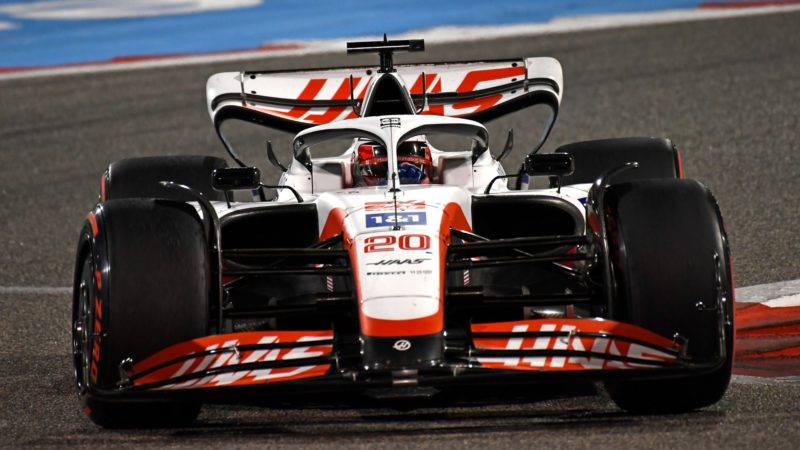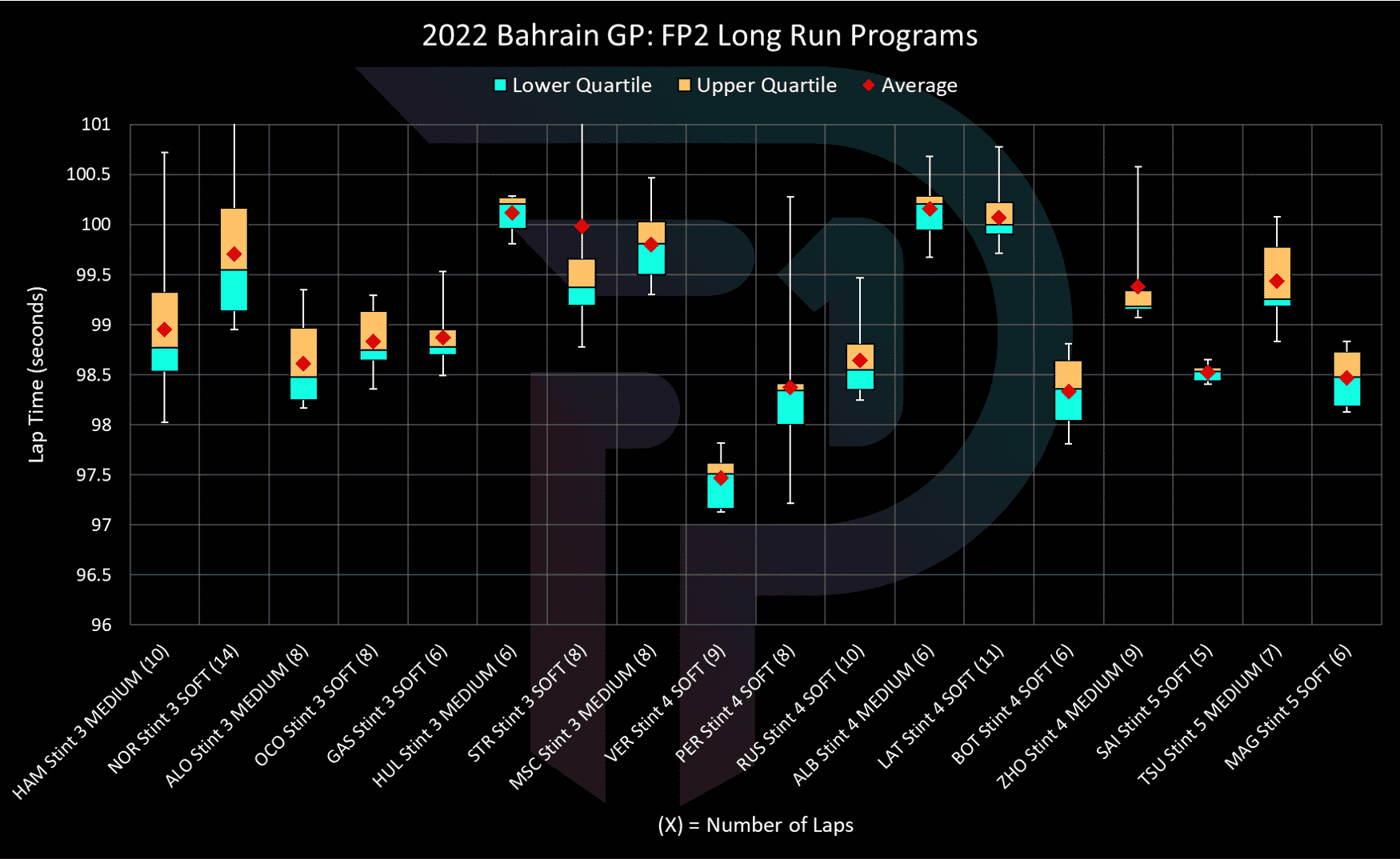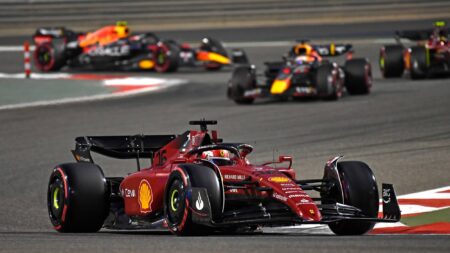Kevin Magnussen’s short stint on the soft tyres was extremely consistent, evidenced by the small spread of lap time in the final column of the graphic above. The average lap time was much better than Williams, Aston Martin and even Alpine – the team that finished top of the midfield last year.
Carlos Sainz complained of struggling in the Ferrari during the weekend, and the Haas driver was able to match the Spaniard’s average lap. Magnussen was less consistent but that’s not surprising given that this is a direct comparison with the car to beat so far in 2022 and with an extra lap on the tyres.
Meanwhile at McLaren things were not looking so rosy.
Lando Norris’ race simulation on the soft compound tyres (second column from the left) was hardly comforting for the team that, during winter testing at least, had looked set to challenge at least Mercedes for the top places on the grid.
Putting together a lengthy 14-lap run on the soft compound tyres, Norris’ efforts were off the pace even at the beginning of his stint.
The sister Haas of Mick Schumacher was able to more or less match Norris on the medium tyres while the Williams of Nicholas Latifi was not far off the McLaren’s pace either and on the mediums as well.
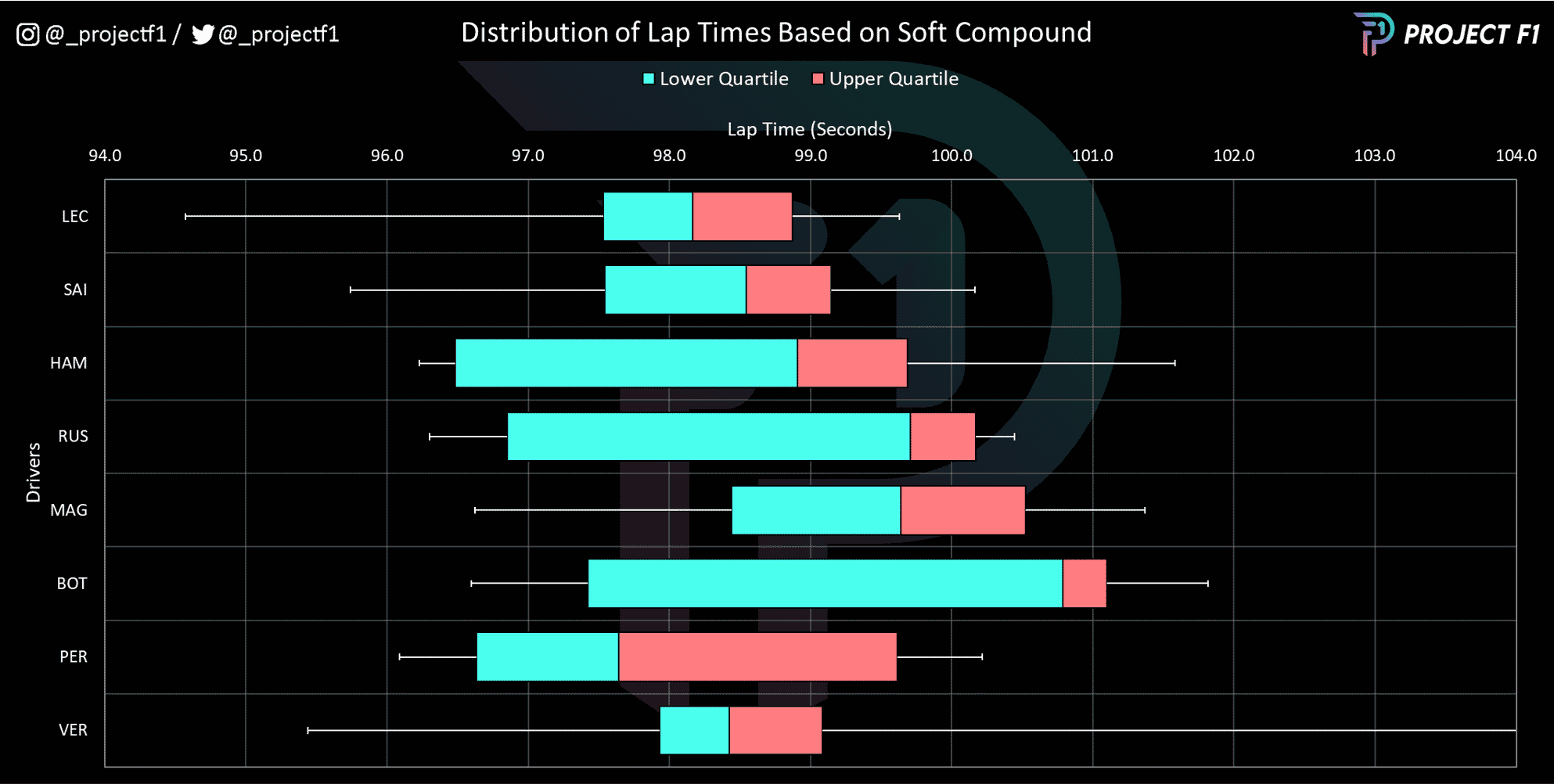
On Sunday, Magnussen’s promising pace held up after he fell out of the top five following his lively start and battles with Lewis Hamilton, Sergio Perez and George Russell.
In fact, his average pace was better than the latter’s despite the gap in performance between the teams evidenced by the averages above.
Valtteri Bottas and Magnussen had been closely matched for the majority of the race weekend and it was no different in the race as they set comparable laptimes battling behind the top six for best of the rest.
Magnussen just about edged the fight on pace but the Alfa Romeo team-mates were able to secure a double points finish as Schumacher’s gamble on strategy to remain out on track with old tyres was undone by the late safety car.
McLaren’s 3D-printed quick fix for its front brake ducts meant the team was compromised before a wheel had even been turned in Sakhir.
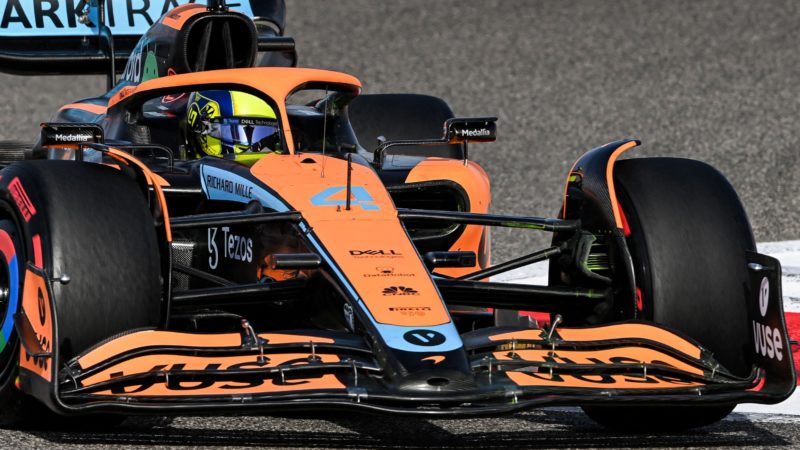
McLaren had to rush a fix for its brake ducts to Bahrain but it didn’t fix performance woes
OZAN KOSE/AFP via Getty Images
“We knew we were a little bit tight on the front brake temperatures but here they just rocketed to a level that we didn’t predict so that took a lot of learning and time to fix,” technical director James Key said in Bahrain. “It also meant we were stuck in the garage trying to allow the car to run reliably with the temperatures that we were generating. We didn’t really do any optimisation in Bahrain, certainly none of what we planned to do.
“We got some reliability runs, but we didn’t have the time we really wanted to allow the drivers to get a feel at a very different track nor to do a lot of work on the set-up with the new bits we put on the car.”
Norris had the better finish but 14th-placed Daniel Ricciardo admitted the car was poorly optimised for the first race weekend of the season.
“Honestly, I think we are just lacking in overall grip,” Ricciardo said. “The car feels okay but obviously when you’re down a little bit on grip you do struggle a bit more and lock a wheel here or there, and make a few errors.
“But I think compared to the quickest cars, at the moment we are just looking for some overall grip. At the moment, that’s our biggest friend in F1, it’s grip and there is never enough.”
Project F1 turns data into graphics that uncover race pace and strategy
See more analysis at @_ProjectF1 on Twitter or @_ProjectF1 on Instagram
